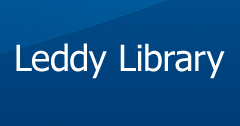Optimizing Detection of Viral Pathogens in Saliva
Standing
Undergraduate
Type of Proposal
Oral Research Presentation
Challenges Theme
Open Challenge
Faculty Sponsor
Jackie Fong, Dr. Brayden LaBute, Dr. Lisa Porter, and Dr. Yufeng Tong
Proposal
The COVID Screening Platform was developed as an accessible, cost-effective, and rapid testing platform for the UWindsor community. The goal is to alleviate the pressures on the community and keep people safe. The platform comprises four parts, saliva screening, wastewater surveillance, next-generation sequencing, and an interactive dashboard to display the findings. Saliva sampling was preferred to nasopharyngeal swabs for screening because its collection is non-invasive, fast, and can be performed by the individual, decreasing the risk of transmission to lab personnel. So far, we have identified approximately 40 cases of COVID-19 from over 1000 saliva samples by developing cost-effective RNA extraction and qRT-PCR testing. My work consists of optimizing different saliva screening diagnostic protocols. Currently, the primary screening method we utilize is qRT-PCR. This has been used to test for COVID-19, and has been adapted for Flu and RSV as well. COVID-19 and Flu/RSV screening typically involve an RNA extraction and qRT-PCR. Early detection can aid in prevention and hopefully relieve the stress on the healthcare system. In the future, we hope to expand our screening platform outside of the university campus and continue to detect novel pathogens and monitor pathogens of concern.
Grand Challenges
Viable, Healthy and Safe Communities
Optimizing Detection of Viral Pathogens in Saliva
The COVID Screening Platform was developed as an accessible, cost-effective, and rapid testing platform for the UWindsor community. The goal is to alleviate the pressures on the community and keep people safe. The platform comprises four parts, saliva screening, wastewater surveillance, next-generation sequencing, and an interactive dashboard to display the findings. Saliva sampling was preferred to nasopharyngeal swabs for screening because its collection is non-invasive, fast, and can be performed by the individual, decreasing the risk of transmission to lab personnel. So far, we have identified approximately 40 cases of COVID-19 from over 1000 saliva samples by developing cost-effective RNA extraction and qRT-PCR testing. My work consists of optimizing different saliva screening diagnostic protocols. Currently, the primary screening method we utilize is qRT-PCR. This has been used to test for COVID-19, and has been adapted for Flu and RSV as well. COVID-19 and Flu/RSV screening typically involve an RNA extraction and qRT-PCR. Early detection can aid in prevention and hopefully relieve the stress on the healthcare system. In the future, we hope to expand our screening platform outside of the university campus and continue to detect novel pathogens and monitor pathogens of concern.

